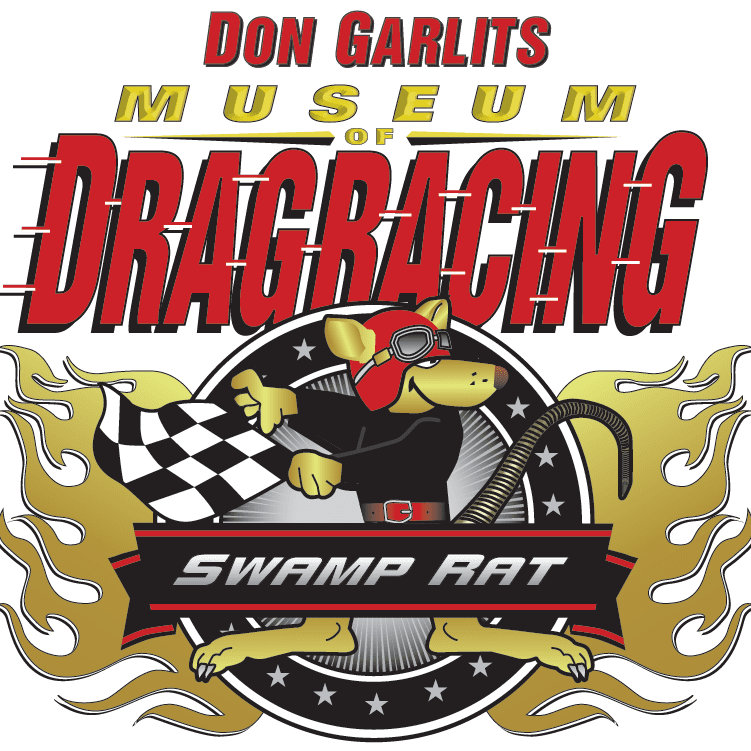2020
Thursday March 12, 2020 Wyndham Garden Hotel, Gainesville Florida.
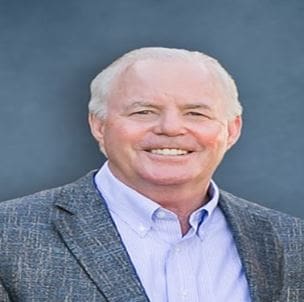
Billy Meyer
NEED BIO
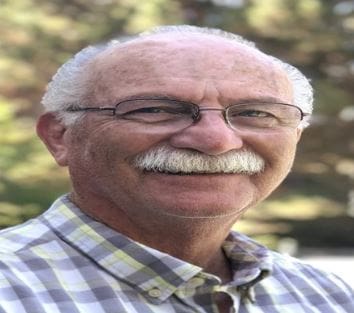
Don Enriquez
As with a lot of the members of the drag racing world, Don got his first experience as a driver in the seat of Gary Densford’s C/Dragster at Lions Drag Strip in Long Beach, CA. In January 1962 he went to work for Stu Hilborn’s Fuel Injection Engineering as a machinist and where he worked with Hall of Famer Gene Adams.
At Hilborn, Don was exposed to a steady stream of racers and after a few trips to the local drag strip he decided he wanted to get serious about driving a dragster on a regular basis. He approached Gene about doing so; after a lot of discussion and planning, in 1968 he made his first run in Gene’s injected DeSoto powered Junior Fuel dragster. After that experience, Don was hooked and became one of the sports outstanding drivers of all time. That year, Don became the first driver of an unblown dragster to break the 200-mph barrier and in 1971 the first to dip into the six second ET’s.
In 1970 the pair posted wins in A/Fuel Dragster class at the NHRA Winter Nationals in Pomona, CA and the NHRA Super Nationals in Ontario, CA. In 1971 they won the NHRA Winter Nationals Comp Eliminators. Along the way they terrorized the entire class locally posting a steady stream of winner circle appearances.
While Don is mostly known for his Junior Fuel (A/Fuel) dragster driving chores, in 1970 he piloted the Adams and Enriquez fuel dragster with twin injected Chryslers for power to speeds of over 217 MPH and ET’s in the 6.70 range. In 1972 he drove the Adams and Wiencek injected Chrysler powered BB/Fuel Funny Car for the win at Firebird Raceway’s famous Nitefire 500. In 1973 the Adams and Enriquez team won the NHRA Super Nationals Pro Comp Eliminator in Ontario, CA. With thirty-three years as a team under their belt, Adams and Enriquez is one of the longest running teams in the sport.
In 1975 the team entered the season with a supercharged Chrysler powered rear engine dragster burning alcohol in Pro Comp class and won the NHRA Winter Nationals in Pomona, CA, the famous March Meet in Bakersfield, CA and the NHRA Super Nationals in Ontario, CA. Over the years Don has also driven a BB/Fuel Funny for the Millicoat twins, and their blown alcohol roadster.
After the demise of the Adams and Enriquez team in 1988 Don became very involved in the emerging nostalgia cars and in 1987 took on the driving chores for Pat Ganahl and Gene Adams in their A/Fuel Dragster. In 1996 Don moved into the driver’s seat of Bob McKray’s injected Chevrolet powered Junior Fuel dragster and has won the NHRA Heritage Junior Fuel Series Championship a total of four times: 2012, 2013, 2014 and 2017. Don took home the runner up for the spot in 2016.
In 2006, Don was named an Honoree at the NHRA California Hot Rod Reunion in Bakersfield, CA. He is also still part of the Hilborn Fuel Injection team and is still doing the driving chores in Bob McKray’s Junior Fueler.
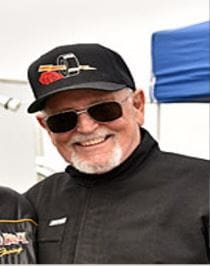
Don Prieto
Don “The Wavemaker” Prieto is unique to the sport in that he is a racer (owner and driver), a journalist, a historian, and a catalyst between the sport and some of the OEM companies. Don started his journey into the world of cars in 1953 when he bought a 1933 Ford Cabriolet which he promptly began modifying. Next came a 1939 Ford coupe with a flathead for power that lasted through his Air Force days when it was replaced with a modified 1949 Olds convertible.
In 1960 he partnered up with a couple of local New Orleans buddies on a Chrysler powered dragster. In 1963 Don moved to California and went to work for Mickey Thompson as a machinist where he was exposed to an ongoing group of local drag racers. In 1963 he was partnered with Don Madden in an AA/Fuel Dragster followed by sharing ownership with other racers including Don Yates and Clark Cagle.
His first move into the world of journalism was in 1966 when he became the Managing Editor of Drag Racing Magazine. With this platform, Don was able to help push the racing facilities into providing better restrooms and food by generating a series of articles about how bad some of facilities were. He was also able to help expose some of the local Southern Californian racers to a much broader group of fans. In 1968 Don moved to Petersen Publishing as an editor on Hot Rod Industry News and continued to help expose the sport to larger readership and promote the manufacturer’s products better.
In 1971 the Chairman of SEMA, Vic Edelbrock, was impressed with Don’s activities enough to hire him as Director of Communications for the association. With his contacts at the magazines, the car builders, the power of Petersen Publishing, and SEMA Don was part of an elite team. This team put together a Show and Tell Car Show in Los Angeles, CA in 1973. This show helped change the image of hot rodding and drag racing in the eyes of the general public and a lot of public officials.
In 1975 he relocated to Washington DC to lobby the US Congress on behalf of the hi-performance and custom industry.
Don opened his own public relations business, The Prietive Group, in 1984 where he soon became a catalyst between OEM manufacturers like Lexus, Honda, BMW, Jaguar, Landrover, and Rolls to name a few. His public relations also extended to Performance Automotive Magazine editors and hot rodders in general. This business is still going strong today.
In his spare time, he penned a bestselling book called “Hot Rod Chronicle”. His current writings can be seen in the prestigious Rodder’s Journal.
Today Don is still active in the sport, he can be found driving around in either his awesome Lexus engine powered ’32 Ford Roadster or his ’56 Chevy Nomad “tow car”. The need for the Nomad is because Don owns and cackles Frank Cannon’s Hustler VI AA/Fuel Dragster and Tommy Ivo’s original injected Buick powered dragster.
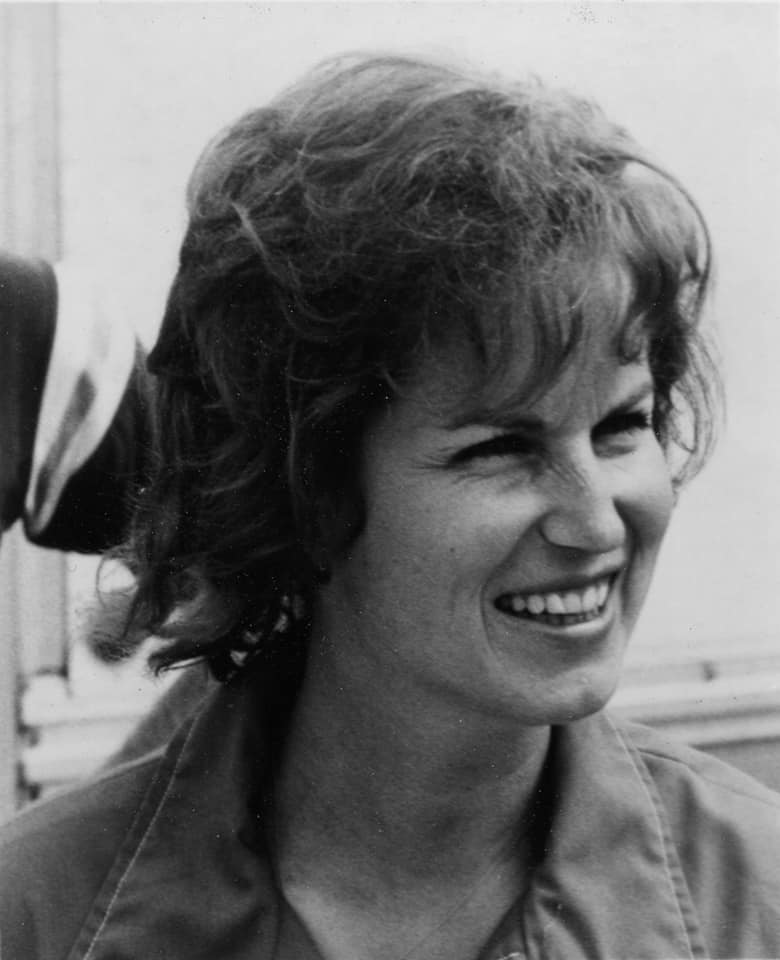
Etta Glidden
Etta Glidden was introduced to the sport of drag racing by her husband Bob at a time in the sport when most women involved in it were seen more than heard. True to the times, Etta stood by Bob as a significant member of the team while he was making a name for himself as one of the true leaders in whatever class he was competing in.
While they competited in several classes in the beginning of their involvement in the sport, their most significant impact in the sport was in Pro Stock. Throughout the team’s years of involvement in the sport, Etta was always beside her legendary husband, Pro Stock superstar and Hall of Fame driver Bob Glidden. By the time the team retired from racing, it had collected 85 NHRA class wins, and 10 NHRA Winston World Championships. Etta was always a fixture at the starting line and in the pits as the Glidden family raced their Ford Pintos, Fairlanes, Mustangs and Thunderbirds (as well as one year with a Plymouth Arrow) against some of the very toughest competitors in Pro Stock class history. As the Glidden Family’s race program developed, Etta served as Crew Chief, keeping the team organized and was there to assist in any way possible, working on the car with her sons-Billy and Rusty-, with Bob’s direction, yet being a mother at the track and at home. There were many of those iconic, leaping celebratory starting line moments with Billy and Rusty as Bob recorded another victory, but those were made possible with Etta’s total dedication to the hard work she did behind the scenes in the pits and at the shop in Whiteland, Ind.
There was also the humanitarian side of Etta that few have known about. She is one of the three ‘Founding Mothers’ of the Drag Racing Association of Women (DRAW) that brought together several of the wives of the leading drivers and personalities of the sport in 1984 following Shirley Muldowney’s life-threatening crash that pointed to the need for both financial and moral support of drag racing families following accidents. Her tenacity and ability to handle the business and family needs made Etta Glidden one of the sport’s most respected personalities. The Patricia Garlits Memorial Award is given out annually to a woman who has “contributed to the sport of drag racing through their professional activities- at the track-and/or their personal activities-off the track-which promotes the sport in a positive manner or to the success of the sport.”
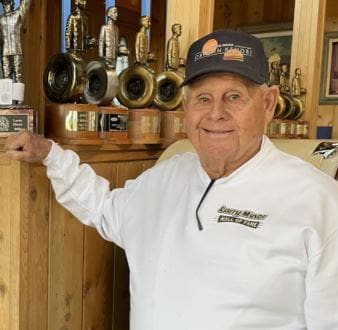
Larry Minor
Larry Minor has often been called a “gearhead” but it is simply a fact of life for him. As a teenager, Larry was very interested in cars of all kinds, how to make them faster, and quicker. His first car was a 1956 Ford which he liked but it wasn’t fast enough so before long it was being modified. Larry’s first true racing experience was in 1959 when he started racing a Jeep on the various sand dunes of Southern California. When the Jeep’s engine expired, he replaced it with a small block Chevy V8 that was quickly modified and his off-road racing career was born.
After attending the 1977 NHRA World Finals at Orange County International Raceway, Larry was hooked and promptly formed Larry Minor Racing which fielded an AA/Fuel Dragster for the 1978 season. With Larry Bowers at the wheel, LMR debuted the car in January 1978 however, the car was badly damaged on its maiden run delaying the team’s entry into open competition. By late 1978 Larry had the car rebuilt and with Larry Dixon at the wheel was runner up at the NHRA U.S. Nationals in Indianapolis, IN. In 1979 the team posted another runner up at the NHRA U.S. Nationals in Indianapolis and won the NHRA Division 7 Top Fuel Championship.
In 1980 Gary Beck took over the driver’s seat and the team won its first NHRA National event, the NHRA Cajun Nationals in Baton Rouge, LA. In 1981 they won the NHRA Spring Nationals in Columbus, OH, The Southern Nationals in Commerce, GA, the NHRA Cajun Nationals in Baton Rouge, LA and the U.S. Nationals in Indianapolis, IN. They finished number two in the NHRA Top Fuel Winston World Championship points race. They also, that year, notched a win at the IHRA Summer Nationals in Bristol, TN. In 1982 LMR won the IHRA Pro-Am Nationals in Rockingham, NC and finished number three in the IHRA World Championship points. LMR would also finish number four in the NHRA World Championship points race in 1982.
The team had a banner year in 1983, posting wins at the NHRA Gator Nationals in Gainesville, FL, the NHRA Southern Nationals in Commerce, GA, the Cajun Nationals in Baton Rouge, LA, the NHRA U.S. Nationals in Indianapolis, IN and the NHRA Golden Gate Nationals in Fremont, CA; this success earned the team the NHRA Winston World Championship. They also posted 17 of the 18 quickest runs ever made up to that time. Along the way they also won the IHRA Spring Nationals in Bristol, TN. In 1984 the LMR team posted wins at the NHRA Cajun Nationals in Baton Rouge, LA, the NHRA Spring Nationals in Columbus, OH, NJ and the NHRA Grandnationals in Molson, Canada finishing number two in the NHRA Winston World Championship points race. 1985 found LMR in the winner’s circle at the NHRA World Finals in Pomona, CA and in 1986 they won the NHRA Gator Nationals in Gainesville, FL, the NHRA Southern Nationals in Commerce, GA and the NHRA Mile High Nationals in Denver, CO.
In 1984 LMR received sponsorship from Miller Brewing and Oldsmobile for an AA/Fuel Funny Car team and entered the Funny Car wars with a blown Chrysler powered Oldsmobile with Ed McCulloch doing the driving. In 1990 LMR posted their first Funny Car NHRA U.S. Nationals win. The 1992 season opened with Cruz Pedregon at the wheel of the Funny Car and McDonalds as its prime sponsor. By the close of the 1992 season they had posted wins at the NHRA Spring Nationals in Columbus, OH, the NHRA Heartland Nationals in Topeka, KS, the NHRA North Star Nationals in Brainerd, MI, the NHRA U.S. Nationals in Indianapolis, IN earning them the Funny Car Winston World Championship. The LMR Funny Car Team would go on to post wins at eight more NHRA National Events.
It should also be noted that Larry is no slouch as a driver and has found his way behind the wheel of every type of race car he has fielded. In 1983 he was the record holder in AA/Fuel Dragster with a 5.25 ET. In addition to fielding some of the most visible race teams of the 1980’s and 1990’s, Larry also brought something to the table; that was nearly unheard of at the time. Larry brought some big time major non-automotive sponsors to the program. As already noted, in 1984 Larry brought Miller Brewing into the sponsorship role and in 1992 he enticed McDonalds to become a major sponsor on both the dragster and funny car.
While he has retired from active participation in drag racing, Larry is still very involved in the world of sand drags and not only fields winning cars there today. He also has one of the most recognized car/chassis names in that world. With all of the accolades garnered in drag racing over the years, it would be unfair to not note that he has posted wins in the Mexican 1000 two times, the Baja 500, the Mint 400, and is a member of the Off-Road Racing Hall of Fame.
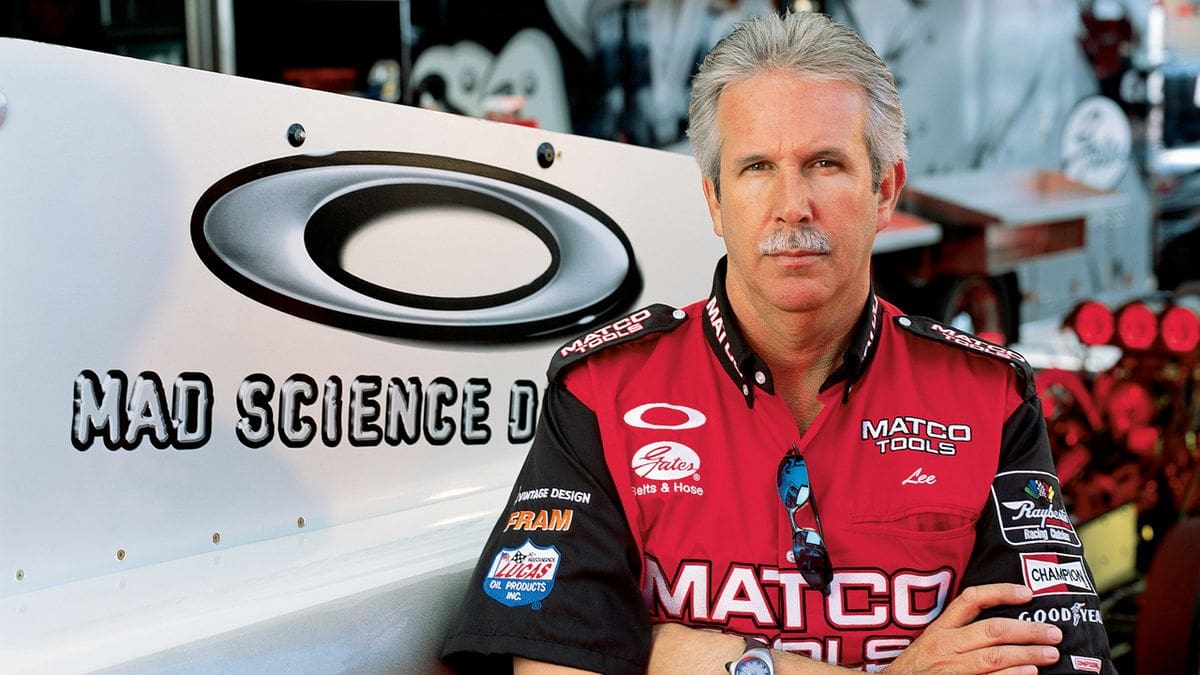
Lee Beard
Lee Beard has been referred to as “a crew chief’s crew chief”. Beard, known for cleanliness, organization and preparation, was first introduced into the world of drag racing by his high school Industrial Arts teacher, Ed Renck, who also happened to have a front-engined Top Fuel Dragster. In 1969, Lee started hanging around Ed’s shop doing the grunt work and gradually graduated into helping maintain the car. By this time, he had fallen in love with the sport, all of its sounds, and smells. In 1972 he bought his own Blown Chrysler AA/Fuel Dragster which he competed with until 1977.
Winning many local events and several Division V events, Lee made the journey to the 1973 NHRA U.S. Nationals in Indianapolis where he made it to the third round of eliminations only to lose to eventual winner Gary Beck. In 1978 Lee began driving Jerry Ruth’s AA/Fuel Funny Car where the pair put together a successful campaign of match races along with local open events through the 1979 season.
In 1980 the team shelved the Funny Car and concentrated on running Ruth’s AA/Fuel Dragster, posting their first big win at the NHRA Mile High Nationals in Morrison, CO. That was the beginning of Lee’s outstanding career as a Crew Chief.
The list of teams and wins reads like a who’s who of drag racing. Gary Ormsby, Larry Minor, Joe Gibbs, Kenny Bernstein, David Powers, Don Schumacher, and Cruz Pedregon just to name a few. The same applies to Lee’s record of wins, championships, and awards. As a Crew Chief, Lee has visited the winner’s circle with 14 different drivers in the Top Fuel and Funny Car classes; for a total of 55 NHRA National event wins. Six of those drivers were first time winners. He also tuned cars to the number one qualifying spot 66 times and set the NHRA National Speed/ET record seven times.
He started his legacy of World Championships when he tuned Gary Ormsby to the NHRA Winston Top Fuel Championship in 1989. In 1992 he helped head up Cruz Pedregon’s efforts to take home the NHRA Fuel Funny Car Championship. As the team manager he Don Schumacher Racing to two more NHRA Championships; one in Top Fuel in 2009 and one in Funny Car in 2011. Beard has won the US Nationals, held in Indianapolis, three times with drivers Ed McCulloch, Cory McClenethan and Whit Bazmore. He was Whit’s Crew Chief from 2001 through 2004 with the team scoring 12 wins along with two second place finishes in the NHRA Funny Car Championship points standings.
Lee wasn’t limited to just winning in the United States. Working for Rapisarda Autosport International in Australia; Lee guided 3 drivers, Larry Dixon, Cory McClenethan and Dom Lagana to six Australian National event wins. Highlighted with Cory McClenethan winning the Australian National Championship title in 2016. Along the way, Lee set the Australian quarter mile National Record, with Larry Dixon, at 4.50 at 335.48 mph
Beard’s awards “wall” also reflects his outstanding accomplishments. In 1984 Lee received Car Craft Magazine’s prestigious Hi Riser Award, in 1989 he was named both Car Craft Magazine’s Crew Chief of The Year and Person of The Year. In 2017 he was inducted into the Colorado Motorsports Hall of Fame and in 2018 into the Colorado Sports Hall of Fame. Lee also earned spots in the Cragar 4 Second Club, the Slick 50 300 MPH Club, and Venolia Piston’s 3 Second Funny Car Club; a feat no other Crew Chief has accomplished.
While he has retired from drag racing, Lee isn’t sitting on the porch in a rocking chair; currently he is a Technical Analyst for NHRA (Fox Sports) and an Angler Athlete for The Angling Channel. Now living near Breckenridge Colorado, Lee is an avid snow skier and fly fisherman.
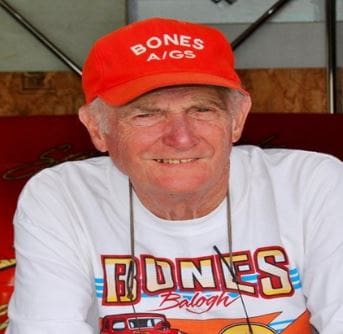
Robert Balogh
Bob “Bones” Balogh was another of the early sports competitors who has always been a “car nut”. His first car was a 1934 Buick Limited coupe he purchased as soon as he got his first California driver’s license at the ripe old age of 14. The Buick was replaced with a 1938 Chevy in 1955 that was to be his first race car which he introduced as such in 1955 at Lion’s drag strip. This car wasn’t quick or fast enough to be competitive so he didn’t waste much time replacing it with a 1949 Chevy fastback with a 283 CI Chevy V8 engine under the hood. Before long Bones bolted a supercharger on the small block engine and turned it into a real terror, posting over 250 wins at Lion’s drag strip with it.
In 1961 Bones installed the engine out of the ’49 Chevy into the Mallicoat brothers ‘41 Willlys Coupe which he drove for over a year. When the brothers built their own engine and started racing on their own, Bones installed the engine in a B/Modified Corvette and started appearing in the winner’s circle again and even notching a class win at the 1962 NHRA U.S. Nationals in Indianapolis, IN. His biggest competitor in this class was John Mazmanian and they soon became friends as well as competitors. In 1962 John bought the complete engine and transmission package and installed it in his 1961 Corvette and with Bones at the wheel, they continued their winning ways this time as partners.
Always wanting to go faster and be even more competitive, in 1963 the pair pulled the engine out of the Corvette and installed it in a ’41 Willys A/Gas coupe. The reliable Chevy engine was strong but the guys sporting Supercharged Chrysler engines were going quicker so in 1964 they dropped a blown Chrysler in the Willys and went back to their winning ways. In 1966 Bones moved from the driver’s seat for John into the driver’s seat of Gary Dubach’s blown Chevrolet small block powered ’33 Willys A/Gasser which was quick but not as competitive as the Chrysler A/Gassers so it wasn’t long before they teamed with Joe Pisano and installed his big Chrysler in the Willys but unfortunately a broken axel put the car into the wall as Lion’s drag strip and put a crimp into the teams efforts. They managed to have the car rebuilt in time for the 1967 NHRA U.S. Nationals in Indy where they finished runner-up to Ohio George Montgomery.
In 1968 Bones teamed with Tim Woods to field a supercharged Chrysler powered 1968 Shelby Mustang A/Gasser for a national match race tour. The tour was quite successful but by 1969 the new Funny Cars were taking the spotlight away from the A/Gas class and he was about to become a father so Bones made the decision to end his racing career. Not being a good spectator and loving to compete as a racer, in 2002 Bones once again found a home in the driver’s seat of his supercharged small block Chevy powered 1969 Camaro and is enjoying the sport again.
In 1960 Bones went to work for Ed Iskendarian, not just grinding cams but building motors as well and developing a lifelong friendship with Ed. While he quit working for Isky in 1966 to go full time racing, if you go looking for Bones today he could easily be at Isky’s just passing the time of day.
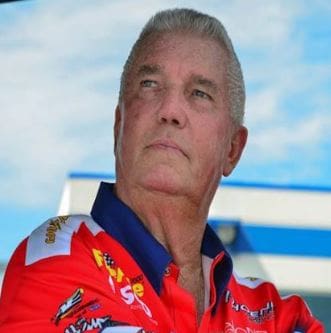
Roy Hill
Roy learned about cars as a young teenager acquiring his first car, a 1969 Plymouth Road Runner, at the age of 23 years old. His first experience at organized racing came in 1969 at the wheel of a 1969 Road Runner, powered Super Stock G. Being a close neighbor of the Petty Family and sharing a mutual love of cars and racing, they became friends with Roy spending a lot of time hanging out at the Petty’s race shop.
Roy began to get really serious about a racing career in 1971 and fielded a 1971 Pro Sock Duster with a Sox and Martin Chrysler Hemi for power. In 1973 Roy moved up into the newly formed Pro Stock with a Petty Enterprises Chrysler Hemi powered Duster, a combination that proved to be a formidable competitor. Roy notched 100’s of races between his Super Stock and Pro Stock days and was always the car to beat.
In 1977 IHRA introduced the unlimited cubic inch displacement Mountain Motor rules for their Pro Stock class and Roy immediately embraced this new environment. His first entry into this new world was a 500 cubic inch Chrysler Hemi in a 1977 Plymouth Arrow which he competed with at both IHRA National events and countless match races.
Roy switched from Chrysler to Ford in 1982 and managed to compete in just about every body style the Blue Oval produced. From the start of the 1982 season until the end of the 1996 season, Roy notched 28 IHRA National Event wins and 31 runner up spots as a team owner/driver. In 1995 Roy put Mike Bell in the driver’s seat of an 800 cubic inch Ford powered Thunderbird and the pair visited the winners circle 7 times and picked up an IHRA World Championship trophy along the way.
While his prime focus in the very beginning was a competitor; in 1989 he embarked on another area of the sport, The Roy Hill Drag Racing School. Moving away from the normal driving school tradition, Roy made the decision to include all forms of race vehicles at his school. This included full bodied Super Stock cars, Bracket Dragsters, Junior Dragster, Pro Stock and Pro Mod classes.
Today Roy is still very active in both the running of his Driving School and Pro Stock Team. He can also be seen racing in Stock and Super Stock competition.
